
Ještěd in a Cage 08 - Jury's Feedback
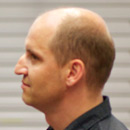 |
What are your impressions of Ještěd F cage, projects, Liberec architecture…?
I am not new to Liberec and I still haven’t stopped envying you this hall we are in. A wonderful thing. No other local school has it, and in my opinion, it contributes to a creative atmosphere. Regarding the level of projects, I see a lot of energy here, decent commitment, and I don’t see large amplitudes. I think most students present a quality standard performance. I can’t find any complete drops in quality downwards, but there are also no clear highlights missing. As for this year's projects specifically, perhaps I am influenced by the Prague Technical University, where there are many successful assignments that are open in the sense that students are not given a redefined task. I mean the requirement not only for how to solve something, but also what to solve it with. For me, this was embodied by the interventions assignment for Liberec for the first year and an island on the Vltava River, announced by the Novák-Balda studio. In both cases, it heavily depended on the students how they approached the topic and what program they chose, which adds an additional dimension to the work. I am missing the development of work in many projects; they only present results. The paths taken to reach the result are rarely visible, and many projects have a problem in presenting the concept. There are no simple schemes explaining why the resulting project looks the way it does. Perhaps I am just an instant juror who has just been forced to plow through more than a hundred works, but I consider the ability to sell the idea understandably as a condition for the survival of the homo architectus species. For example, we had a discussion about the crematorium project, which was artistically and formally interesting, but there's not a single mention of how the thing came about. There are several such projects here, and if they had similar explanations, they could be rewarded.
How was it to collaborate with other jurors?
I can only recommend trying to get someone from abroad onto the jury again, as was successful this year. Jan Tabor brought a lot of impulses; he has a different way of thinking, different customs, and an approach to education; he was able to point out different projects, which consequently were brought into discussion, which for me personally was the most interesting moment, because only with him did the jury start to argue a bit more (and fruitfully). Without him, it was too uniform. (Note: Jan Tabor arrived later)
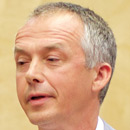 |
What are your impressions of Ještěd F cage?
I think it is a great desire for self-reflection from the people at the school in Liberec. It could lead, as is often the case at other schools, to some sort of submarine effect if you were to remain here only with yourselves and your teachers. It is very good that this process is ongoing every semester, and each time there is a different jury, so it is actually such a cyclic subjectivity assessing subjectivity.
This year's jury is also nothing objective. We randomly met here today, we didn’t know each other well, and I’m glad that we all, despite various differences, more or less agreed without anyone compromising their inner conviction, leading to a consensus on all the nominated projects.
At the same time, I want to add that if not all ten nominated, then definitely at least the five awarded projects could all be Ještěd F cage.
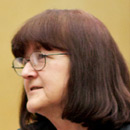 |
What are your impressions of Ještěd F cage, projects, Liberec architecture…?
If I were to compare FUA TUL with the Prague or Brno Technical University, here I feel a greater balance; I didn’t find such extreme differences between the best and the weakest projects. It is evident that everyone works in one studio, creating a natural and encouraging competition. However, I can only assess Brno and Prague based on a smaller sample of projects that I receive for competitions on housing organized by our website. In both of the first two years, Liberec was the most successful even though it participated with a significantly smaller number of projects. Only this year did Prague and Brno make a stronger impact, but from both schools, several below-average works also came. From the exhibition of projects of the whole school at Ještěd, it is evident that the level of work is generally good.
What I regret is a certain incompleteness or inconsistency in the presentation. There are beautiful ideas in the projects, but the "path" is not explained, which may be of better quality and more important than the result. I can’t read anywhere what the concept of the solution consists of; I won’t find it anywhere in any schemes. In discussions with the jury, we only debated why a house has a particular roof, for example, whether it is a view or what it actually serves. That is a real shame. Conceptual sketches would sell the project and its core idea much better than fancy visualizations.
Regarding the jury's assessment, we easily agreed on the first ten projects. Then it was harder to choose a winner; the voting on each proposal ended with 3:3. We didn’t want to choose an arithmetic average; some jurors would feel that the winning project is not that quality and doesn’t deserve first place. In the end, we unanimously selected Jakub Dvořák's works from the first year, which initially wasn’t even a hot favorite. But he is truly talented. When we individually evaluated the projects in the first round, he received five votes for both of his projects. He deserves the victory, and I hope it will also encourage him in future years.
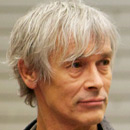 |
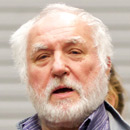 |
What are your impressions of Ještěd F cage?
The first impression is that there are too many topics here. There are four studios, and there are no major differences among them. And if there are any differences, they seem random to me. I think it wouldn’t hurt at all if the studios were more distinct. Even in terms of who leads them, because it doesn’t hurt to imitate these people for a while. For example, people go to Zaha Hadid because they like what she does, and if they like it, it just looks that way for a time. The process of appropriating something is imitating something. When someone writes poetry, they also write poetry like Rimbaud or Karel Hynek Mácha and then sometimes find their own style. So, on one hand, there are way too many topics, and for that reason, I think nothing is being done really deeper. Now everything is on the surface. I don’t see any proper analysis behind it; I don’t see any big problems with it. I would expect there to be formally theoretical problems, philosophical problems, artistic-historical relationships, and so on. It is not that common, or it is overwhelmingly lacking. And then I think that partly the topics are awfully banal because they are too practical. Students should be more confronted. Or the education should awaken their desire to come up with something, just to mess around. I would prefer if there was more in the projects that would provoke me. I call it something that causes resistance. I look at it, and I may not like it, I may not understand it, but I need to know there is something in it. But when I look at complementing some cottages or some gaps and so on, which are everywhere in every city, that seems wrong to me. It also seems wrong to me that the process is not very visible. I have a suspicion that everything is done at the last minute, and some do more and some less, and what is done is hung up and shown, and then one occupies themselves with it. In my opinion, that is very little, and everything is in such a concrete context in which these Czech architects still want to think. As I know from Brno, they still want to think in that Brno functionalism. And in Prague, they still want to think in that the true architecture is architecture. I read in one discussion that some architect said: "I will just say one word - architecture." And instead of saying: "I will just say one word - provocation." Or: "I will just say one word - rebellion." Well, simply architecture. And when an architect says architecture, I don’t know what it is. Well, and so they do a lot of architecture but do not work with imagination. And imagination means working with that architecture. For that reason, I like the Kuks assignment, for example, because there is architecture there and something can be done with it, but something completely different, just taking the courage from it and learning to do something in that sense as a gesture. And so it is with all the assignments: there are some cottages by the water, and the cottage stands there, and I don’t know why it stands there, and it just stands there. Such cottages are built everywhere. Simply what grows everywhere around, what is built is also repeated here. Instead of making alternatives to that. Over there, when you look at this or that, there are hundreds and hundreds everywhere. I wouldn’t mind if there was more fashion here, more trendy things. What is being done now. What this one does and what that one does again. I like Nouvel, and I like that one. And I would focus on that more. And I wouldn’t mind at all if someone said to me: "This one does it like Nouvel!" At least then I would recognize Nouvel, but here I don’t recognize anyone at all. It just stands somewhere. In Šluknov or in Zittau.
So this, what you just said, is for you such a comparison, for example, with your experience from schools in Vienna or Bratislava?
In Bratislava, it is a bit different. After all, Vienna is quite close. And in Vienna, for example at the technical university, what we call research exists. And here… it is that typical vocational training, basically a continuation of the secondary school of building industry, by other means. As they say, war is a continuation of politics by other means. So the difference lies in what I want! What I want, whom I want to teach or what I want those students to become. People who search, investigate, and experiment. Or do I want them to know, to comply with a specific zoning plan? Or that when someone tells them what to build in Jablonec nad Nisou in the square, where I have a gap or what to do with it. That is the fundamental difference. Here, they are learning something like a vocational school, and not like a school of imagination, poetry, provocation, rebellion. And above all! This is not what fits this time. We need to demand something for cities to develop, and cities don’t develop by adding something in such a context. And the context here is too predetermined, and free imagination is somehow suppressed. And that should be addressed right at the beginning because those topics are, as I say, nonsensical. Like, for example, an observatory for the northern lights. If a typhoon were observed, it would have to be conceived differently, but observing the northern lights is like sitting in a cinema, and nothing else can come from it than some footbridges.
How was it to collaborate with other jurors?
Well, excellently… They were willing to listen to my arguments, and we came to quite a good agreement. What you do seems very okay to me. What doesn’t seem okay to me at all is that the teachers are not here; well, most of them are not here. Then I think the jury should select a few interesting works and say that we want to discuss this, and those students should sit here and debate about it.
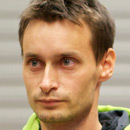 |
What are your impressions of Ještěd F cage, projects, Liberec architecture…?
I think there is a great school in Liberec, which is specific in that it is the smallest faculty of architecture in our country, and it has the advantage of a large studio where all students are together, which is a completely unique thing. There was a great atmosphere even during our evaluation of the projects, as we don’t move between individual rooms, but whenever you turn around, you see a completely different approach to the matter, a different studio, and different assignments.
How was it to collaborate with other jurors?
The evaluation was difficult in that one cannot compare a specific assignment, but there are a large number of assignments from first-year students to graduates, meaning different levels of students and projects. Finding some decision-making system in it is practically impossible, so we tried to find a compromise between what students should know and the results of their work. Students should focus on presentations that focus on important and substantial things. Sometimes, solutions to marginal problems might overshadow the original sketch (idea) that was good and eventually faded into the background.
The English translation is powered by AI tool. Switch to Czech to view the original text source.
0 comments
add comment
Related articles
0
08.05.2014 | Ještěd in the Cage 11 - Responses from the Judges
0
12.04.2013 | Ještěd in a Cage 09 - Judges' Feedback
0
13.06.2012 | Ještěd in the Cage 08 - Award Ceremony
0
04.02.2012 | <title>Ještěd in a Cage 07 - Jury Feedback</title> Ještěd in a Cage 07 - Jury Feedback
0
20.07.2011 | Ještěd in the Cage 06 - Jury Feedback
0
04.02.2011 | Ještěd in a Cage 05 - Judges' Reactions
0
26.06.2010 | <title>Ještěd in a Cage 04 - Judges' Responses</title> Ještěd in a Cage 04 - Judges' Responses











